The embedded computing market is currently undergoing significant transformation, driven by an explosion in AI-driven network traffic, a surge in data, and an expanding demand for industrial edge computing power. Traditional embedded processors are facing unprecedented challenges in performance and reliability. Recently, at the Embedded World 2025 conference, AMD launched its AMD EPYC Embedded 9005 series products to expand its x86 embedded processor lineup, aiming to meet these challenges by providing robust computing power and rich embedded features for scenarios such as networking, storage, and industrial applications.
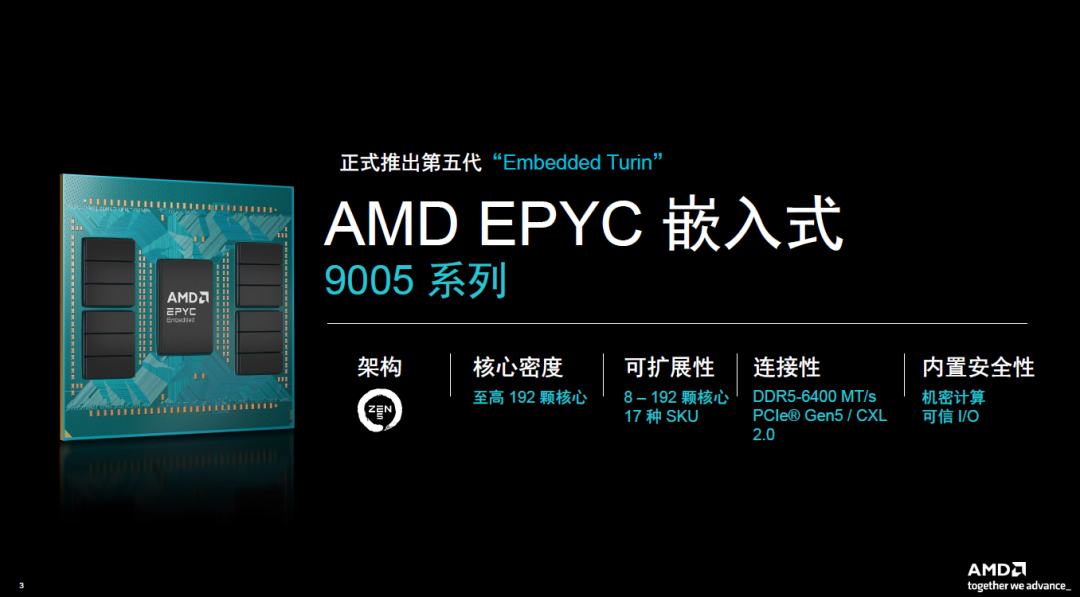
Core Density, Performance, and Energy Efficiency Elevated
For a long time, a key topic for embedded products has been how to maximize performance within limited space while maintaining relatively low power consumption levels. This challenge has intensified with the current wave of artificial intelligence and the explosive growth in demand for edge products, leading companies to raise their expectations for embedded products.
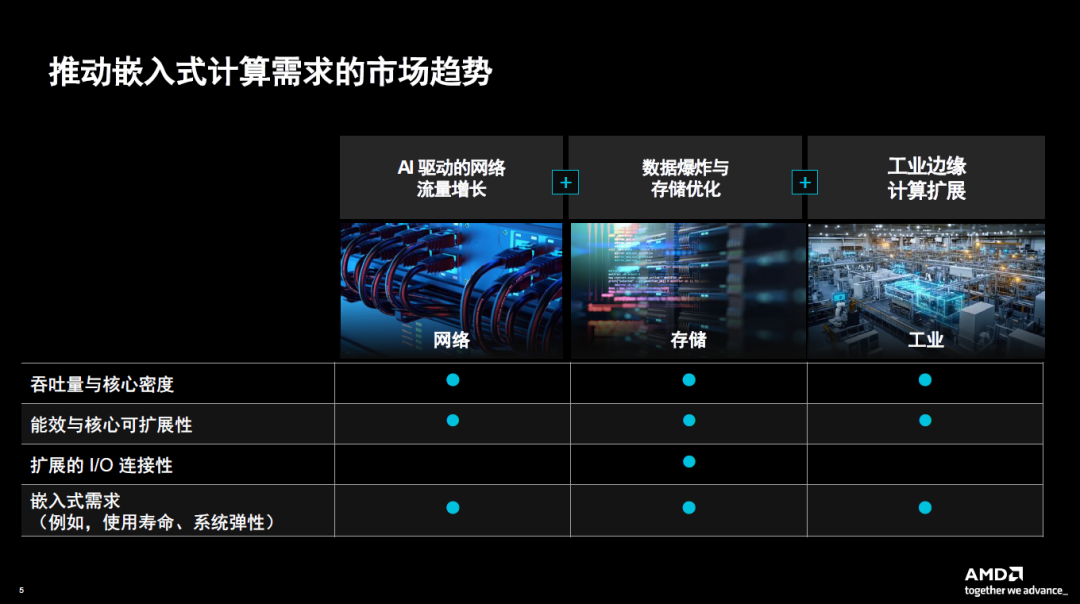
The EPYC Embedded 9005 series (codenamed “Embedded Turin”) launched by AMD is based on the Zen 5 architecture and utilizes a more advanced 3/4nm process node, comprehensively optimizing performance and power consumption:
-
Throughput Improvement: Compared to the fourth generation, the throughput of “Embedded Turin” has increased by 1.6 times, meeting the high throughput demands of networking and storage applications. For example, in network firewall applications, higher throughput allows for real-time processing of larger data packets without slowing down traffic, enhancing network security.
-
Energy Efficiency Improvement: The energy efficiency of “Embedded Turin” has improved by 1.3 times, providing higher performance while reducing energy consumption, making it ideal for power-constrained embedded applications.
-
Scalability Improvement: “Embedded Turin” supports 17 SKUs, with core counts ranging from 8 to 192, catering to diverse needs for cost, power consumption, and performance across different application scenarios.
-
I/O Connectivity Improvement: Enhanced I/O connectivity better supports storage capacity expansion, meeting the demands for capacity and performance in data storage applications.
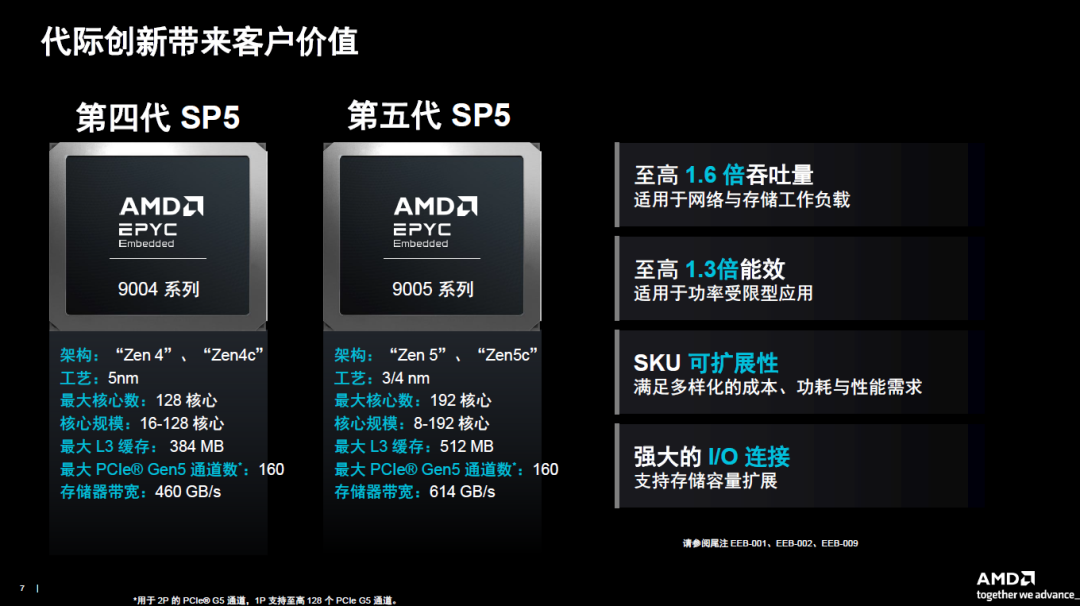
According to Tarang Shah, Senior Product Manager for AMD Embedded x86 products, “Embedded Turin” matches the fifth generation AMD products in terms of computing, core density, and scalability, continuing the EPYC series’ tradition of excellent performance and scalability while being customized for the unique needs of the embedded market, providing the following support:
-
Extended Lifespan: AMD provides 7 years of product manufacturing support and chip reliability support for this series, ensuring stable operation throughout the product lifecycle. Additionally, AMD has conducted extended temperature condition testing to guarantee durability in harsh environments. This support is crucial for industrial control systems and communication devices that require long-term stable operation.
-
System Resilience and Security: The new NTB (Non-Transparent Bridge) feature supports data transfer between two CPUs in different memory domains, enhancing system availability and fault tolerance; the DRAM Flush feature retains data during power outages, ensuring data security; the dual SPI feature supports secure bootloaders, ensuring that the execution environment is trustworthy and secure. These features are vital for applications requiring high reliability and data security, such as financial transaction systems and medical devices.
-
Ease of Application Development: This series supports the Yocto framework and DPDK/SPDK, greatly simplifying the software development process and helping developers quickly build customized embedded applications.
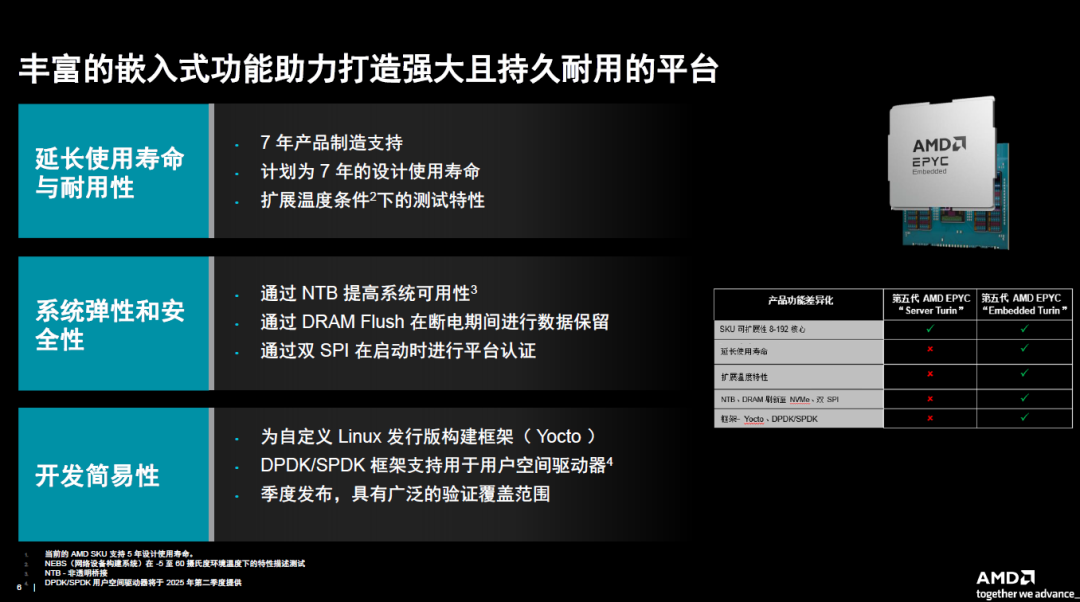
Building a Stronger Computing Platform through Ecosystem and Collaboration
As a server-grade product, “Embedded Turin” not only relies on its powerful embedded computing performance but can also collaborate with AMD GPUs, FPGAs, and other products to build a more robust computing platform. For instance, in AI inference applications, “Embedded Turin” has a very strong parallel data processing capability due to the addition of more execution units, effectively handling inference for large language models, medium language models, and small language models. However, for the massive computations required by ultra-large language models, “Embedded Turin” may struggle; in such cases, it can serve as the host processor, passing data to AMD GPUs for accelerated processing, thereby improving the efficiency of ultra-large language model inference.
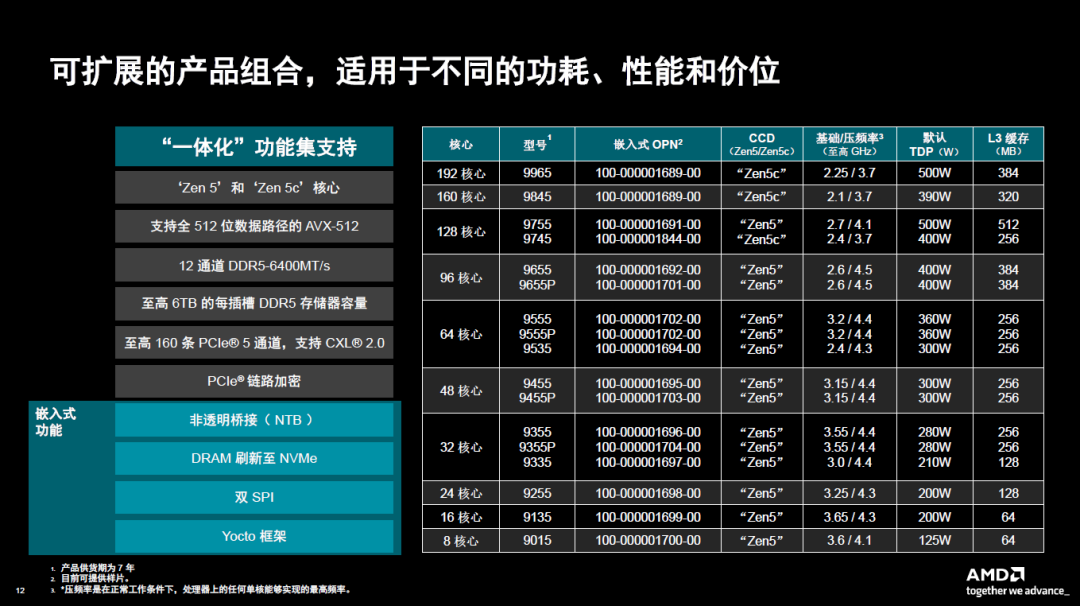
In data security applications, AMD FPGAs can work in conjunction with “Embedded Turin” to utilize the DRAM Flush feature, transferring critical data from volatile memory to non-volatile memory during power outages, and then returning the data when power is restored, achieving higher data security.
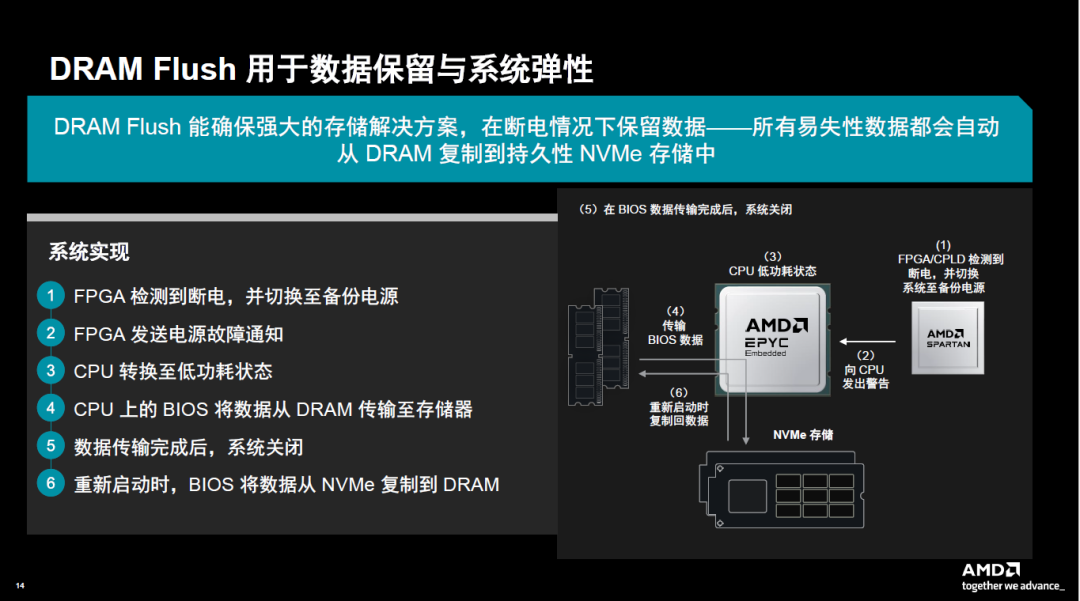
Moreover, AMD is actively engaged in building an ecosystem. “Embedded Turin” is built on the numerous tools, development kits, and middleware provided by “AMD Server Turin” and collaborates with ODMs to offer additional development tools and support, such as Yocto, DPDK/SPDK, to help customers quickly develop and deploy embedded applications.
Conclusion
The AMD EPYC Embedded 9005 series “Embedded Turin” processor, with its proven trusted platform, rich embedded features, and leading performance, brings new choices to the embedded computing market. It meets the demands for high performance, high reliability, and high security in networking, storage, and industrial applications, with numerous close partners in these fields.
Currently, samples of the AMD EPYC Embedded 9005 series products are available, with mass production expected in the second quarter of 2025. According to Tarang Shah, AMD’s sixth-generation EPYC embedded series products are also in the planning stage, with expected performance improvements exceeding double digits and the addition of more new features and technologies.
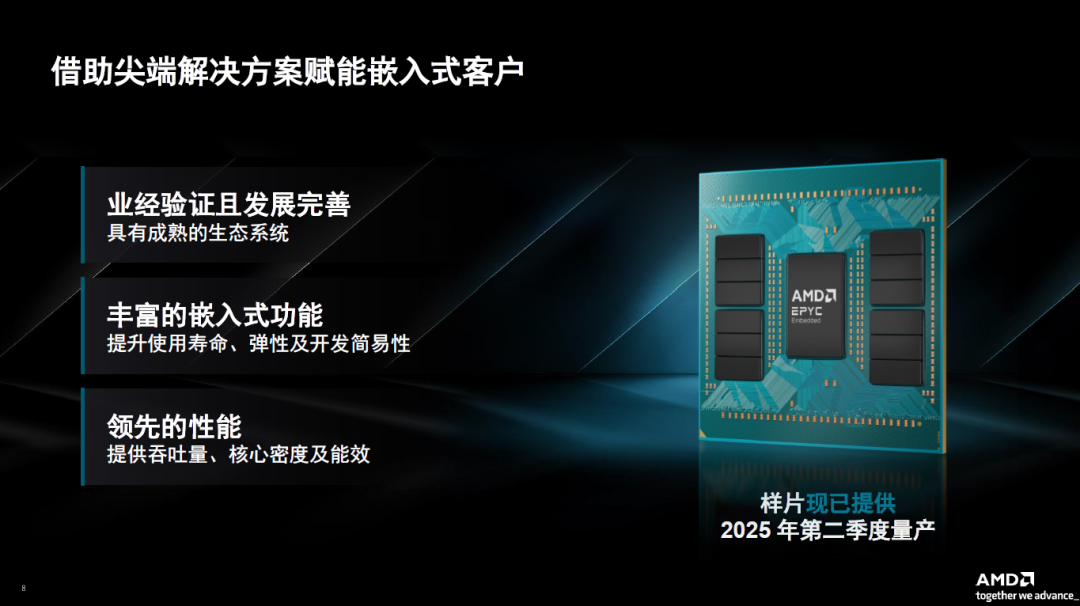
Editor: Ricardo
-END-
Scan to Join the HardwareGroup Chat

